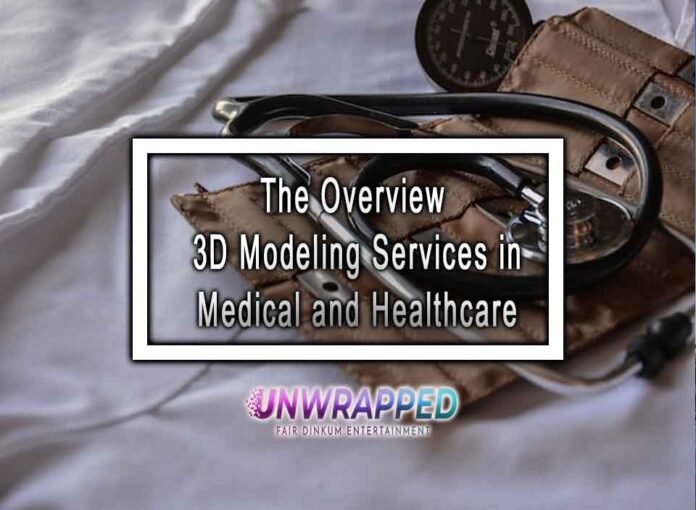3D modeling, a groundbreaking technique, crafts three-dimensional digital representations from an object’s spatial data. Initially popularized in industries like animation and architecture, its versatility has found profound resonance in an unexpected domain: healthcare.
Today, the medical field increasingly leans on 3D modeling for visual representation and as a pivotal tool in surgical planning, patient education, and diagnostic analysis. As we stand on the cusp of a medical revolution, it’s evident that 3D modeling services are not merely an auxiliary tool but a transformative force reshaping the contours of modern healthcare.
Key Applications of 3D Modeling in Healthcare
The transformative power of 3D modeling in healthcare is evident across various applications, helping clinicians provide more precise and less invasive medical care. Let’s contemplate some of the current applications of 3D modeling in this sector.
Surgical planning. Surgeons increasingly rely on 3D models to visualize intricate bodily structures, enabling them to plan complex procedures precisely. For instance, in a recent case, a surgeon successfully removed a rare, deeply embedded tumor using a 3D model of the patient’s organ, minimizing risks and ensuring a safer operation.
Medical training and education. Traditional textbooks are now supplemented with 3D models, offering medical students a clearer understanding of anatomy and surgical techniques. Moreover, integrating virtual reality (VR) and augmented reality (AR) has elevated this learning experience, allowing students to immerse themselves in realistic surgical simulations and anatomical explorations.
Patient education. 3D models serve as invaluable tools in bridging the communication gap between doctors and patients. By visualizing their conditions in 3D, patients gain a clearer understanding, fostering informed decisions about their treatment options.
Prosthetics and implants. The era of one-size-fits-all is fading. With 3D modeling, prosthetics and implants are tailored to individual patients, ensuring a perfect fit. This customization enhances comfort and optimizes functionality, marking a significant leap in personalized medical care.
Benefits of 3D Modeling in Healthcare
The integration of 3D modeling into healthcare has ushered several significant advantages, reshaping medical practice and patient care. Here are some of the most prominent cases.
Enhanced precision and accuracy. One of the most significant advantages is the heightened precision it offers. Surgeons, equipped with detailed 3D models, can anticipate challenges and navigate complex procedures, leading to a marked reduction in surgical errors. This precision directly translates to improved patient outcomes, with surgeries being more targeted and less invasive.
Cost-efficiency. Financial constraints often dictate healthcare decisions. 3D modeling alleviates some of these pressures by reducing the need for expensive physical models. Furthermore, medical tools and equipment design and production have become more streamlined, eliminating wastage and ensuring that resources are utilized optimally.
Improved patient engagement and satisfaction. Knowledge is empowering. When patients visualize their medical conditions through 3D models, they better understand their health challenges. This not only demystifies complex medical jargon but also fosters a sense of trust. Visualization bridges the communication gap between doctors and patients, leading to more informed decisions and, ultimately, heightened patient satisfaction.
Challenges and Considerations
While 3D modeling in healthcare offers numerous advantages, it’s essential to recognize the challenges and considerations that accompany its adoption:
Data privacy and security. As medical data becomes digitized, ensuring the protection of patient information is paramount. 3D models often contain sensitive patient-specific details and must be safeguarded against breaches. Additionally, healthcare providers must navigate a complex web of regulatory considerations, ensuring compliance with data protection laws and standards.
Technical limitations. The current state of 3D modeling software isn’t without its limitations. Some tools may not offer the granularity required for specific medical applications. Furthermore, the effective use of these tools often demands specialized training, ensuring that medical professionals can harness the full potential of the technology without compromising patient care.
Cost implications. Adopting 3D modeling technology requires a significant initial investment, from procuring the software to training staff. While the long-term benefits can be substantial, healthcare institutions must carefully balance these upfront costs with anticipated patient benefits, ensuring that the investment translates to enhanced patient care and outcomes.
Summing Up
3D modeling has undeniably revolutionized healthcare, offering unparalleled precision, patient engagement, and cost-efficiencies. From intricate surgical planning to personalized prosthetics, its applications are vast and transformative.
However, as with any groundbreaking technology, challenges persist. Many medical facilities still lack sufficient infrastructure, and physicians don’t possess the necessary computer literacy to operate 3D modeling software on a decent level. At the same time, most solutions themselves require further refining and development to deliver satisfactory results. Therefore, the medical community must champion further research and investment in this domain.
By embracing 3D modeling wholeheartedly and addressing its challenges head-on, medical professionals and software developers can unlock its full potential, ensuring a brighter, more efficient future for healthcare. The call is clear: let’s invest, innovate, and integrate 3D modeling into the very fabric of modern medicine.










